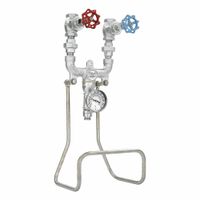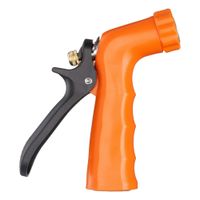Hose Stations, Hoses & Nozzles
Hose stations, hoses, and nozzles create mixing unit stations used to clean and sanitize in facilities. Hose stations are built with two separate valves used for mixing hot and cold water that can be sprayed at high pressure to clean surfaces in washdown applications. Replacement hoses and nozzles k .....Read More
Frequently Asked Questions
What is a hose station and how does it work?
How do you install a hose station for washdown applications?
What are the benefits of using a mixing unit station for cleaning and sanitizing?
How do you maintain and clean a hose station?
What types of hoses are best for high-pressure cleaning?
How do you choose the right nozzle for a hose station?
What are the common issues with hose stations and how can they be fixed?
How do you replace a hose or nozzle on a hose station?
What safety precautions should be taken when using hose stations?
How do you ensure the proper mixing of hot and cold water in a hose station?

